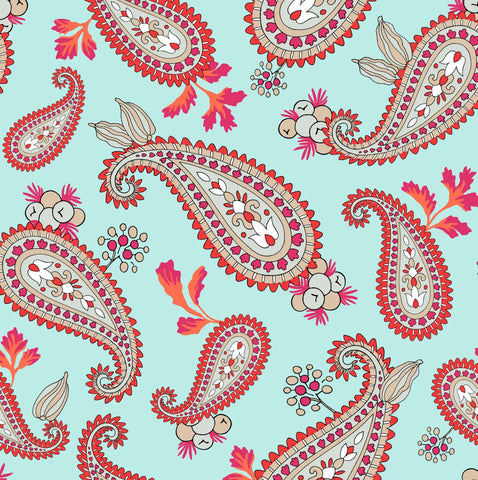
Did you know Buddies Gin has its very own Paisley pattern designed by artist Patrick Moriarty (aka Paisley Power)?
You can see it on our limited-edition bottles - click here to shop.
But what is the history of the famous pattern known worldwide?
Introduction
From fashion runways to home decor, the Paisley pattern has remained a beloved and timeless design for centuries. Its intricate and mesmerizing motifs have adorned fabrics, accessories, and even architecture - captivating the hearts of many.
In this blog post, we’ll delve into the rich history of the Paisley pattern - tracing its origins, evolution, and enduring popularity.
Origins in Ancient Persia
The Paisley pattern finds its roots in ancient Persia (modern-day Iran), dating back over 2,000 years. Originally known as boteh or buta, the design was inspired by the shape of a droplet or budding flower.
The symbol held deep cultural significance - representing fertility, growth, and eternity.
Spread to the Indian Subcontinent
During the Mughal Empire in the 16th century, the Paisley pattern made its way to India. Artisans embraced the design in their textiles, shawls, and garments.
The motifs were handcrafted using block printing, embroidery, and weaving - showcasing the region’s incredible craftsmanship.
European Influence and Popularity
In the 18th and 19th centuries, the Paisley pattern surged in popularity across Europe. Trade via the East India Company brought Indian textiles to the West - including shawls featuring the Paisley motif.
These luxurious items became symbols of status, elegance, and exotic fashion.
The Scottish Connection
Scotland played a pivotal role in the pattern’s history. The town of Paisley became a major textile hub during the Industrial Revolution.
Scottish weavers reproduced the intricate motif in tartans, kilts, and household fabrics - giving the design its modern name.
The Swinging Sixties and Psychedelic Era
The 1960s counterculture movement gave Paisley new life. With bold colours and swirling shapes, the pattern became iconic on:
-
Clothes
-
Album covers
-
Psychedelic posters
It perfectly matched the free-spirited energy of the time.
Modern Interpretations
Today, the Paisley pattern continues to inspire. From boho and vintage styles to high fashion, designers experiment with:
-
Colours
-
Scale
-
Layout
Its timeless appeal makes it both versatile and striking.
Conclusion
The Paisley pattern’s journey - from ancient Persia to modern fashion - proves that true elegance stands the test of time.
So the next time you spot one, take a second to appreciate the centuries of artistry behind its curves and swirls.
Discover the Paisley Pattern on Our Bottle
We collaborated with artist Patrick Moriarty (Paisley Power) to create a limited-edition design celebrating our roots and your good taste.
👉 Explore our bottles now and enjoy free UK delivery across the UK.
Cheers, Buddies!

